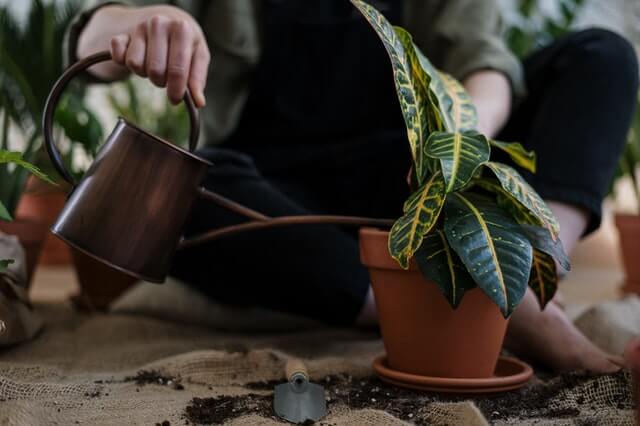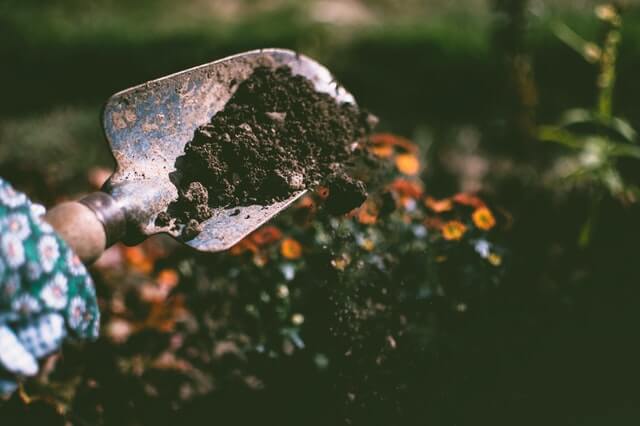Plantain
Cold hardy perennial that can even exist despite being trod upon.
Nutritional, Culinary & Medicinal Uses
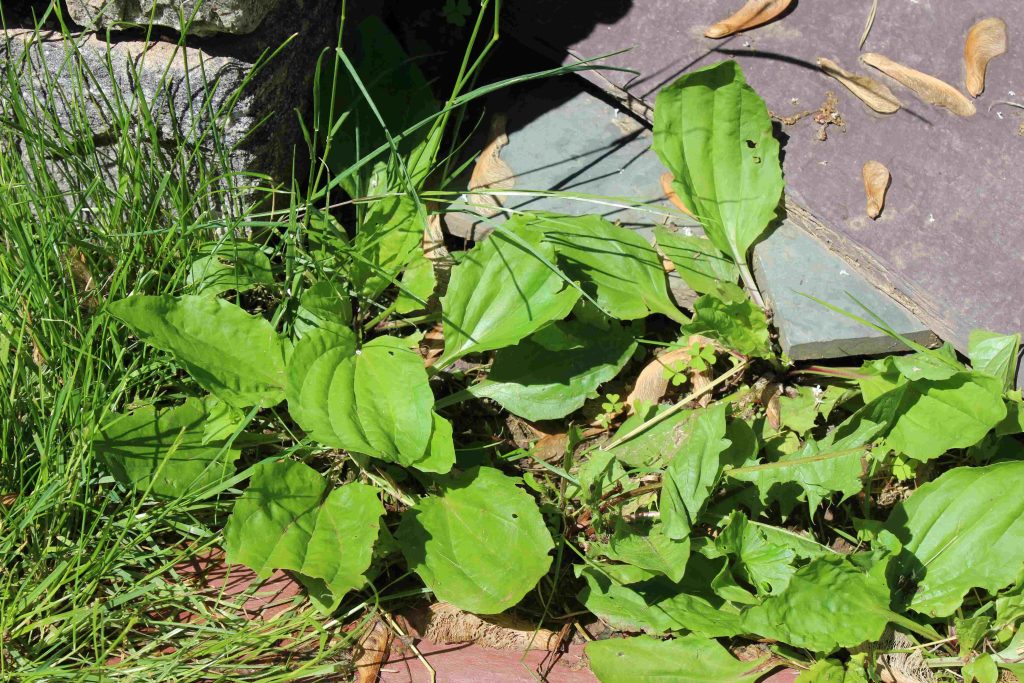
Culinary: One can make plantain leaf green juice, with just plantain and water. Particularly older and tougher leaves can be used in stews or fries. It can also be brewed in a tea with 1-2 teaspoons of dried plantain leaf to a cup of water or 2-4 teaspoons if the plantain is fresh [1].
Medicinal Uses: This plant can help to reduce inflammation and promote wound healing through use of a poultice. This can be created by chewing up the leaves and then placing them on the wound. We also made a tincture from plantain leaf and apple cider vinegar. Strain out the liquid at least six weeks afterward. The plant is also a natural laxative as the seeds contain psyllium, which absorbs water in the digestive tract [2]. It has been found in rats that the plant might help alleviate stomach ulcers [3].
How to Cultivate and Harvest
Planting: Plantain is cold-hardy and a perennial. It grows low to the ground, so it avoids lawn mower blades and does not react badly to people walking on it. It is not unlikely to have this growing in the yard already, but if one needs to get it going, plant in a place that is easy to control. Plant it also preferably in full sun, and it will do fine in any soil. Excepting particularly dry climates, no watering is needed. It has no natural predators or pests that target it [4].
Harvesting: Young and tender leaves can be harvested for use in salads, while older leaves can be cooked in dishes such as stews. Seeds can also be used in both of those dishes. The leaves can be any size; those depicted in the colander and dehydrator are particularly large because they are from second year plants.
Note: Especially if you are harvesting from land that is not your property such as the side of the road, be sure that there is no danger from pesticides or other chemicals.
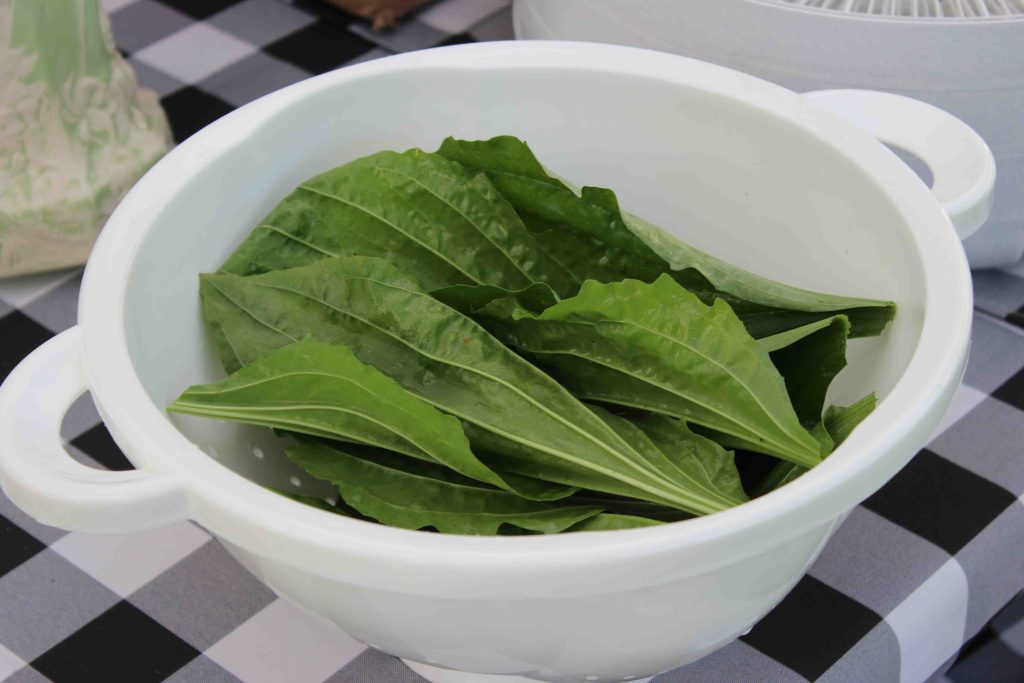
Preservation
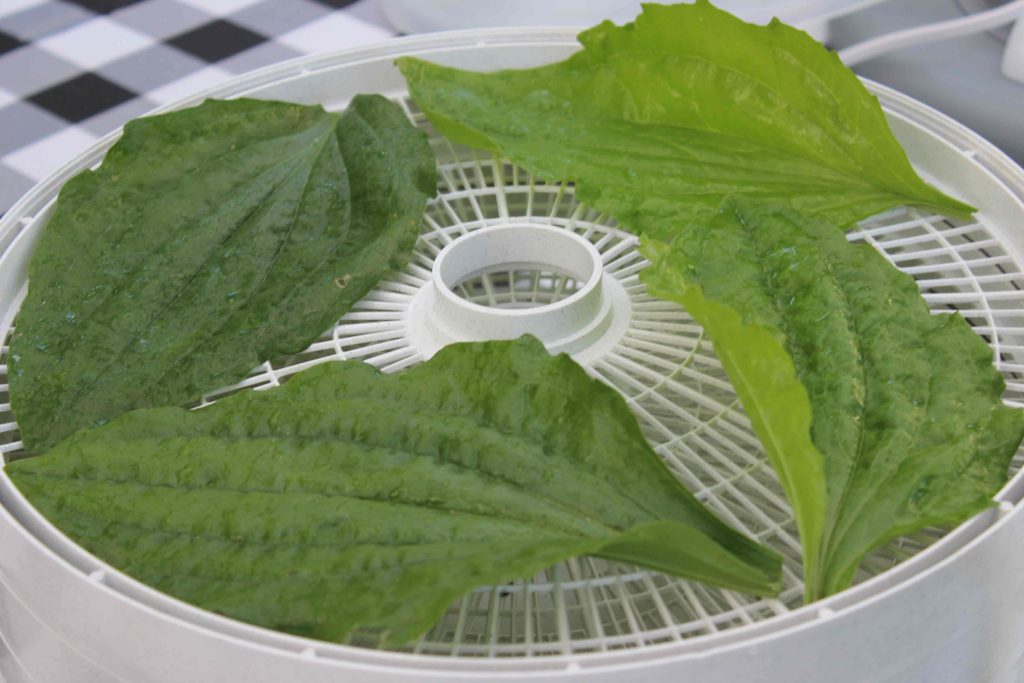
One can dry planatin in a food dehydrator on 95 F (which is what we did) or simply air dry it in a screen in a dry location with good airflow that is warm. Store after drying in an airtight container in cool, dark location. One can also directly make a tincture with fresh leaves as mentioned above.
History
Plantain was originally a European plant that was introduced to North America through New England by the Puritans. Historically, it was cultivated in monasteries [5]. Native Americans associated it with European settlers because of their bringing the plant to the continent and because it thrived in soil disrupted by the Europeans.
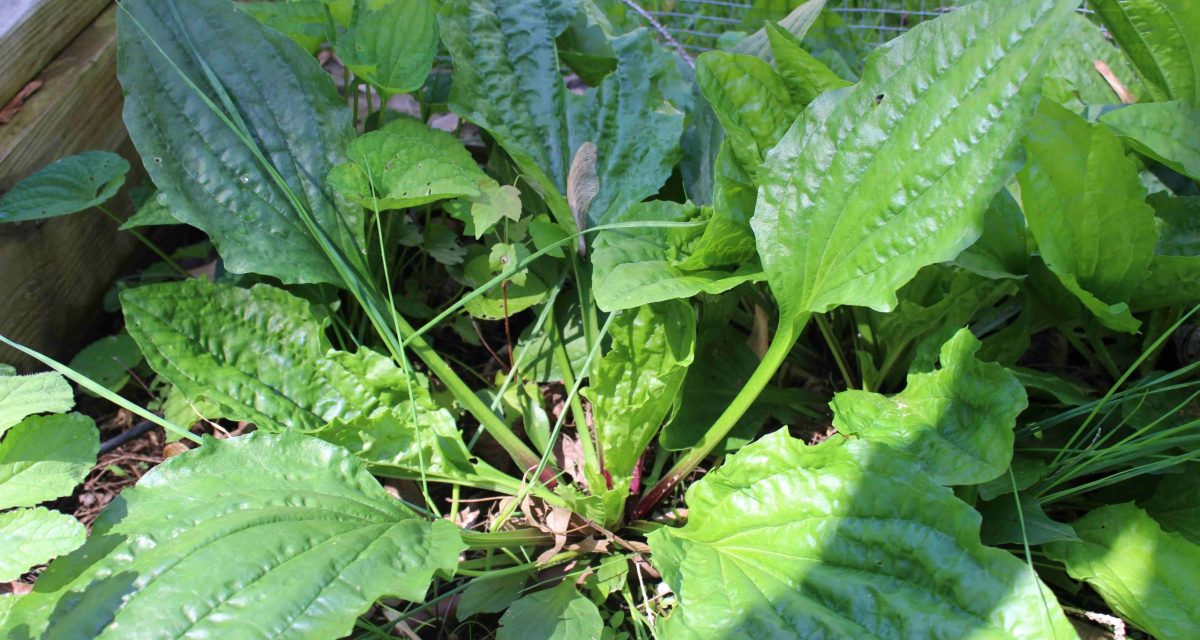
References
1. “Plantain Leaf Benefits and Recipes.” Herbal Academy, 2011, https://theherbalacademy.com/blog/plantain-leaf-benefits-recipes/
2. Jalanka, Jonna, et al. “The Effect of Psyllium Husk on Intestinal Microbiota in Constipated Patients and Healthy Controls.” International Journal of Molecular Sciences, 20 January 2019, https://www.mdpi.com/1422-0067/20/2/433
3. Melese, Endale, et al. “Evaluation of the Antipeptic Ulcer Activity of the Leaf Extract of Plantago Lanceolata L. in Rodents,” Phytotherapy Research, 7 February 2011, https://onlinelibrary.wiley.com/doi/10.1002/ptr.3411
4. Jeanroy, Amy. “How to Grow and Care for Plantain Weed.” The Spruce, 11 April 2022, https://www.thespruce.com/what-is-a-plantain-herb-1762301
5. Chandran, Rakesh. “Broadleaf Plantain.” West Virginia University Extension, July 2020, https://extension.wvu.edu/lawn-gardening-pests/weeds/broadleaf-plantain
Why Choose Us
Let us now emphasize on the main benefits that customers will get by your company.
Fastest Work
An attractive line about the heading above.
High Skill
An attractive line about the heading above.
Clean Work
An attractive line about the heading above.
Proper Take Care
An attractive line about the heading above.
Let's Bring Nature Into Your Lovely House
Use these paragraphs to focus on the topic in the headline. Make sure you keep it short and attractive.
